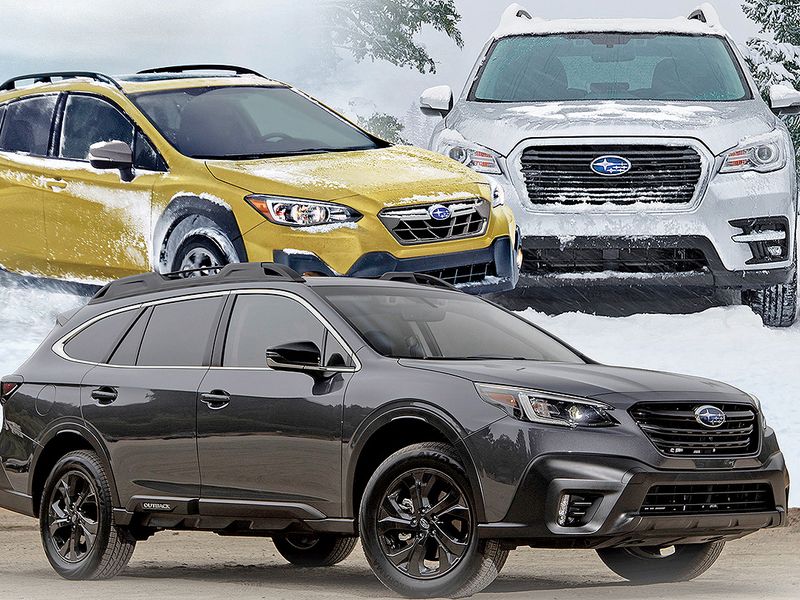
COVID-19 may have played a role in snapping Subaru of America’s 12- year streak of sales increases and 11-year streak of record deliveries last year, but a third streak remained intact.
Its U.S. market share grew — the ninth consecutive year of such progress — despite a 13 percent decline in its sales. The Japanese company inched up 0.1 percent in 2020 to a 4.2 percent market share, while the pandemic-stricken nation suffered a 14 percent plunge in volume.
“It wasn’t a huge increase, but I think the way we try to do business is just keep it steady and do everything we can to keep our foundation as solid as we can,” said Jeff Walters, Subaru of America’s senior vice president of sales. “We were happy, given some of the bigger challenges we had when things really started falling off the rails in the spring, that we could still turn out a market share increase.”
Subaru’s sales plunged 47 percent in both March and April, the biggest monthly declines in three decades, as the automaker felt the impact of production shutdowns and shelter-in-place orders. Smaller double-digit declines followed in May through August.
However, increases in October and December helped guide Subaru to a 0.3 percent increase in the fourth quarter to 175,382 vehicles, according to the Automotive News Research & Data Center. “2020 really showed resilience within the Subaru retailers,” said Patrick Wergin, executive vice president at Annapolis Cars, which includes Annapolis Subaru and Gateway Subaru in Maryland, and chairman of the Subaru National Retailer Advisory Board.
“We were able to adapt and were able to make the changes needed to keep the sales going forward. Obviously, as with many other brands, we had some inventory shortages in the summer. But the strong demand allowed us to end the year with a strong sales pace. The Outback and Crosstrek were great sellers for the year.”
Subaru and its retailers benefited from “excellent months of production” over the last five months of 2020, Walters noted.
“We were able to do a pretty good job building retailer inventories back up from August through December,” he told Automotive News Walters said Subaru has a 2021 sales target of 660,000 vehicles and an objective to increase its market share again, but added that the automaker doesn’t have a set percentage in mind.
“Forester, Outback, Crosstrek and Ascent will carry us in 2021,” Walters said.
In December, Subaru Corp. CEO Tomomi Nakamura told Automotive News that the automaker is focusing on U.S. market share with the next milestone of 5 percent as the target to hit.
“We’re not too far away from being able to get there,” Walters said.
“In fact, there are some months where our retail market share does reach 5 percent already, so we’re pretty encouraged by that. I think we’re getting close enough just to say, ‘Keep doing business the right way. Play it for the long term.’ If we’re able to do that then certainly sometime over the midrange, we will reach that 5 percent.”
A 4.2 percent market share and nine years of growth is a stark difference from Subaru’s past, when it was a niche import brand with annual U.S. sales consistently below 200,000 vehicles and a market share of less than 1.5 percent.
From 2001 to 2004, Subaru’s market share stayed at 1.1 percent. It increased to 1.2 percent in 2005, but stayed there until 2008 when it increased to 1.4 percent.
Subaru’s market share rose to 2.1 percent in 2009 and to 2.3 percent in 2010, but dipped back to 2.1 percent in 2011 before the streak started.
Subaru has passed Kia, Dodge, GMC and Volkswagen in terms of market share during the streak.
Subaru’s lineup has also grown. It added the Crosstrek subcompact crossover and BRZ coupe in 2012 and returned to the three-row crossover segment with the Ascent in 2018.
“When we started this nine years ago, and just the overall increase in sales going back about 12 years, that really started with just having good product and the right product, [and] doing very well with right sizing of SUVs with the right content,” Walters said.
“Then you tie that with the branding, the marketing and the Love campaign, [and] that’s just been very steady for us as we’ve been able to build our brand equity there.”